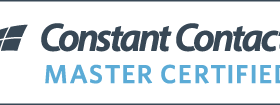Increase Your Profits—Cut Costs Now!
About 35 years ago I accepted a job in Puerto Rico as the export marketing manager for a large company of about 1000 employees. The company was a mass production clothing company with a very large production plant—and very large ambitions.
I had more hair at that time and I remember that I grew a beard and wore a jacket and tie to the office every day in an effort look older…
The goal was to reach $2 Million in export sales my first year and $5 Million the second year.
As is the case in most businesses, the company wanted to increase their profits. Bottom line profits for an apparel company of that nature are typically 5%. So we were hoping to add $2 Million in sales to gain an additional $100,000 in profits. I was very impressed at how efficient this company was! There was minimal to no waste! Even the waste scraps of fabric were compressed into bales and sold.
After I had been at the company for about 6 months the person running the dyeing and finishing operation became ill and I was asked to step in and help manage the dyeing of the fabric. The reason I was asked to do it was that I was one of a very few employees who were fluent in English and Spanish and understood the technical language as well.
To make a long story short, I discovered some terribly inefficient practices very quickly. I also discovered ways to increase production in the dyeing process, and to reduce the amount of chemical inventory.
This is a true story—the result was a savings of $100,000 over the first year.
It was much easier to gain this $100,000 than the $100,000 that was gained by the sale of $2 Million in clothing. We didn’t have to sell anything additional to save that money. We ended up doing both; but that’s not the point—the point is that the fastest way to more profits is to reduce costs.
Let’s be clear about reducing costs: it means obtaining the same level of product or service at a lower cost. It does not mean buying a cheaper product for less money.
Even in companies that are very efficient, there is always the possibility that cost reductions can be effective.
I know we have a large variety of businesses here. And our businesses vary in size. The points I will discuss will apply to nearly all situations—and even our personal lives which also should operate like businesses when it comes to spending money.
My first point is:
What you don’t know will usually cost you money.
In the case of the dyeing of fabric, I obtained some knowledge that the company didn’t previously have—so they didn’t know they were performing steps in the process that were costly and unnecessary. With the new knowledge we reduced the cost without changing the quality of the product. By eliminating unnecessary steps, we also increased production!
Over the years as I have operated my own businesses or helped others, when I have discovered ways to help reduce costs—the universal response was always “I didn’t know that.”
For example—business owners have told me they didn’t know that the person who sold them their personal insurance might not be the best source of business insurance. As you know, all insurance companies have a sweet spot and a special market they target.
If you’re paying for business insurance, I highly recommend you get a comparative quote. Start the process 60 days before the renewal date. Don’t get a comparative quote by giving your declaration page to the competition. A proper business insurance agent will ask you about your business to gain a proper understanding of it, and then tell you what types of insurances you need and then provide a quote for it. Since you may currently have insurance you don’t need—it’s best to start from scratch when asking for new quotes. You will learn important information along the way.
The more you know, the smarter you buy.
Here’s the second point:
For cost reduction, start with the current vendor.
Theoretically, you already feel comfortable with the current vendor for any product or service you’re currently buying. Take out your profit and loss statement, look at all the expense areas whether they are direct costs of the service you provide or they are administrative costs—and identify the ones you want to work on. I say during every year, you should take a look at each one.
When the opportunity arises—ask the current vendor for a better price. Point out how you are a good customer, you are loyal, you pay on time, you’re easy to get along with—and you therefore want to be sure you’re getting the company’s best price before you’re tempted to look elsewhere.
Many times, just asking the question will result in a better deal. Remember, we business people all know that it’s much more costly to get a new customer than it is to retain an existing customer—so as an existing customer we should take advantage of that.
By the way, this can work even with mundane items like cell phone bills, cable service, long distance. Just call up and say you would like to know if there’s a way for you to save money on the service. Perhaps you are paying for some features you don’t need? Perhaps their rates have come down and you didn’t know. Perhaps there’s a special promotion…
Perhaps you’re already getting a discount from a favorite vendor and you think it’s the maximum discount—don’t be afraid to ask for a larger discount—the worst that can happen is that they say they can’t give it to you.
Here’s the third point:
Don’t take “no” for an answer—be persistent.
Another true story—a company I cannot name manufactures in the US and sells internationally. They have to attend conferences in different countries and give sales presentations. In the course of a year, they end up with many airline tickets that are unused. They are intelligent buyers, so they buy at very low prices and then have the “non-refundable” tickets which are useless.
Well, I recently learned that “non-refundable” is not absolute. This company called the airline and told them that they wanted to redeem the value of the non-refundable tickets for future travel. The result is that they were able to obtain credit toward future travel in exchange for the non-refundable unused tickets. After all, the airline had the money and never extended any service. And we all know they oversell the seats anyway so you can’t say they actually “lost” anything.
Fourth point:
Be sure you get what you order
During the 1980’s and early 90’s, I was a partner/owner of a Philadelphia textile mill.
We purchased lots of cotton yarn to use in our manufacturing operation. The yarn came in large cartons of about 180 lbs. We had a scale to weigh cartons coming in and going out.
At one point we noticed that all the cartons from a certain mill were 1 to 2 pounds light. We brought it to their attention but they refused to agree, stating that they checked their scales every day and the cartons had a digital printout on them and it wasn’t possible.
But we checked our scale also and we continued to think we weren’t getting what we paid for. We also had a good relationship with the vendor and liked their product—and we didn’t think they would intentionally cheat us.
During one conversation about this I asked how they checked their scales. They told me the procedure was to put an exact 50 lb weight on it and see if it registered exactly 50 lbs. If it didn’t they adjusted it.
I took the bold step of telling them I thought this was the problem. I asked them to get 4 50 pound weights and check it. It took a few weeks and when they did it they came and told us that we were right and issued us about $6000 in reparation.
By the way, nobody else they sold to was checking.
Be sure you’re getting what you order. Remember that some companies will accept an order at a lower price and then cut down on the product or service. Be sure that your order is clear and understood and then be sure you get what you ordered. It can be as easy as telling the Starbucks barista they gave you a tall instead of a grande and it can be complicated—but it’s up to you to complain if it’s not what you ordered.
Fifth point:
Watch out for fees!!
I’m amazed at how many people do not fight the fees on their credit card statements and their bank statements. It usually only takes a phone call!!
Right now banks are squeezed. They need income from fees—but they don’t want to lose your checking accounts or savings accounts because they need them too.
Watch your statement for fees. Any time you are charged fees, call up and get an explanation. Then try to have them removed or reduced. There will usually be an accommodation nearly 100% of the time.
Better yet—shop around for banks and credit card companies—attempt to get something for your business. As you know, credit card companies vary dramatically in terms of the interest rates they charge and what they offer as rewards for use of the card. Be sure you do the research so you get the best deal.
Conclusion:
All the money that drops to the bottom line is yours. It’s worth the effort!









